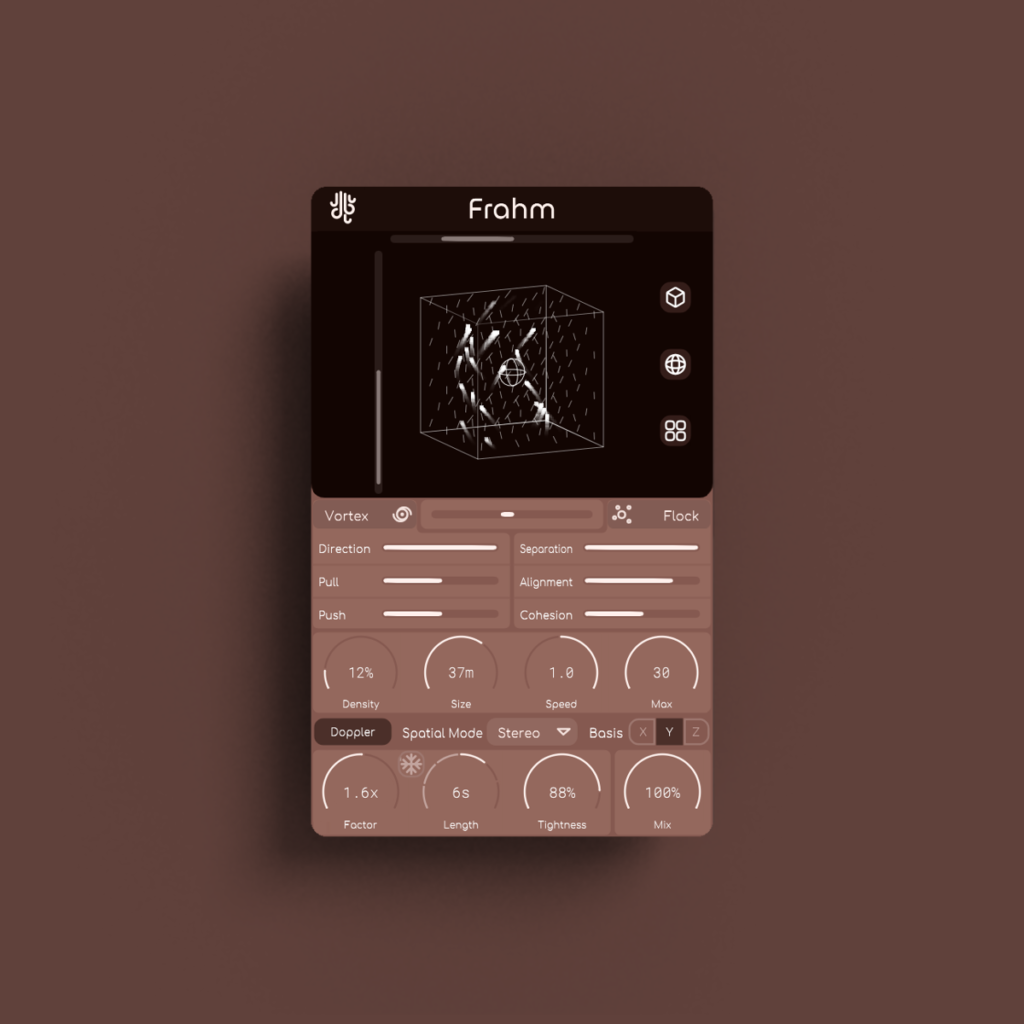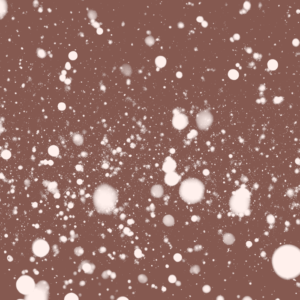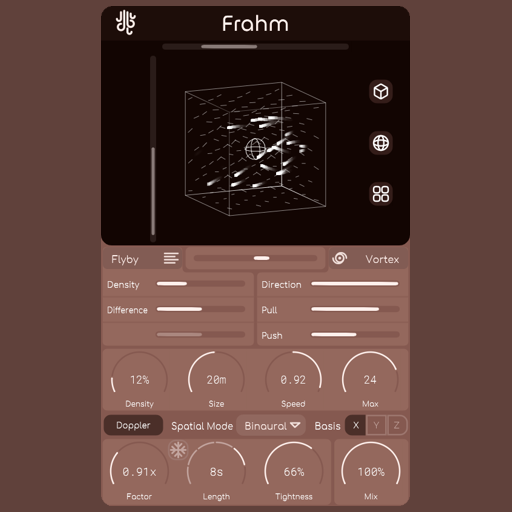
Frahm is a multi-spatializer, using force fields.
Built on top of a particle-based force field system, Frahm takes the movement of particles that it simulates and treats them as sound sources in three dimensional space. Like Transfer, but controlled indirectly, and with a bunch of sources.
Frahm allows you to select from ten different force-field algorithms, adjust their parameters and even mix two of them together for your desired result.
When multiple instances of Frahm are layered on top of each-other in your DAW, you can create highly intricate soundscapes, all in real time.
Frahm is able to operate it’s spatial engine in multiple different modes depending on your intended application. Binaural for headphone-optimized listening, and stereo for conventional speaker setups.

Force-Fields
The heart of Frahm is it’s “force field” particle system. Essentially, these functions take in a position of a particle and return a direction for the particle to move in. The particle then gets nudged in that direction.
Each of one of Frahm’s force-field algorithms have their own parameters which can uniquely affect the behavior of the algorithm. Couple this with the ability to cross-fade between two different functions, Frahm can create sound movements in almost any fashion.
Outside of the individual algorithm parameters, Frahm also features “Meta parameters”, such as movement speed, movement basis (that is, which axis particles will be travelling along), and simulation size.
Highlights
Optimized doppler shift
Spatializing with doppler shift sounds great. What sounds better is doing it for every single particle, all the while using only a fraction of the CPU usage as other plugins doing fractional delays.Made For Performing
Resize, freeze, and alter Frahm’s internal audio buffer with minimal artifacting. All in real time.Peek into the Chaos
Frahm’s 3D viewport lets you see exactly how your particles are moving. Use the X / Y sliders to change the view angle of the space, or just drag your mouse.
It it gets better though; Enable “Force Field” display mode in the viewport’s options to get an understanding of what movements will occur depending on where your particles are located.
User-Drawable Force Fields
New in 1.1.0: Select the “User” algorithm and open up the editor to draw your own force fields! A lot of different options for doing drawing are available, and you “scan through” the third dimensions to draw force values on different “slices” of the algorithm.
Overview
Not a fan of reading manuals? Check out this video for a look into all of Frahm’s controls:
Algorithms
If you want to know even more, This video goes over all of Frahm’s available force-field algorithms, as well as all of their different parameters;
Updates
Blog posts related to Frahm
Frahm Update 1.1: User-Drawable Force-Fields
Hello! Frahm has been updated to 1.1, bringing new features, mainly the ability to draw your own force field as opposed to using the available...
Read MoreNew Release: Frahm, an Audio Plugin for Gestural Processing
Built on top of a particle-based force field system, Frahm takes the movement of particles that it simulates and treats them as sound sources in...
Read More- Three dimensional vector field particle system
- Ten vector field algorithms to choose from
- Multiple parameters for adjusting each algorithm’s characteristics
- Crossfade system for fading between two different algorithms
- Accelerated doppler shift processor
- Multimode spatial processing
Stereo mode, binaural mode, HQ binaural mode - Vectorized, resizable interface
Windows: Supports VST3 & AAX
MacOS: Supports VST3, AU & AAX (Intel and ARM)
A Manual for Frahm is included with the download package. You can also check out the Lese Knowledge Base for documentation on Frahm.
people have asked before and yes, i do think that nils frahm is a good musician, and he has a cool last name.

